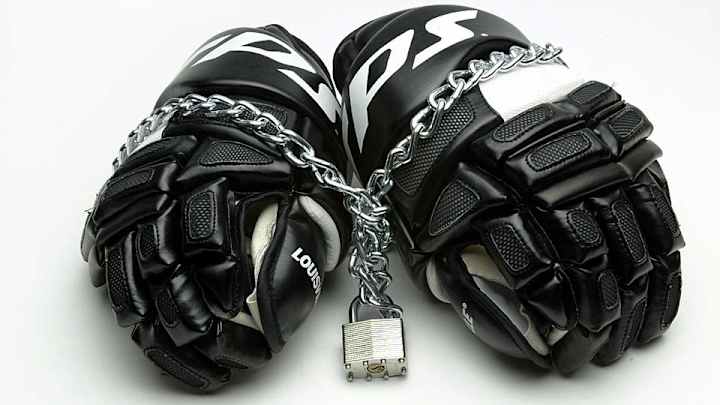NHL free agent deals with lockout protection an ominous trend

There are storm clouds looming on the NHL’s labor horizon. At least that’s what a pair of recently signed contracts seem to suggest.
The current Collective Bargaining Agreement between the NHL and its players extends through the 2021–22 season, but it includes a clause that allows either party to opt out of the agreement after ’19–20. And judging by an emerging trend, it’s clear that some players aren’t just expecting the owners to take advantage of that opportunity—they’re preparing themselves financially for an inevitable lockout.
NHL’s wave of pre-arbitration deals a sign the system is working
The trend became apparent to everybody when the details of Derek Stepan’s new contract with the Rangers were released. As Larry Brooks of the New York Post confirmed, Stepan will be paid a total $5 million for the 2020–21 season, with $3 million coming in the form of a signing bonus.
Why is that distinction important? Because unlike straight salary, that money is due to the player no matter what ... even if the owners instigate the fourth lockout of the Gary Bettman era.
• Free agent tracker | Available free agents
Stepan isn’t the first player to secure this kind of protection in a deal. Earlier this month, Ryan O’Reilly’s seven-year, $52.5 million contract with the Sabres was structured to feature only $1 million per season in annual salary. The remaining $45.5 million comes in the form of signing bonuses, including a $5 million payment for 2020–21.
O'Reilly’s deal then isn’t just lockout-proof. It’s buyout-proof.
While these are among the first contracts that have been arranged this way, they won’t be the last. Like the no-trade and no-movement clauses that preceded them, these bonus structures could well become the key incentive required by star players before they sign any long-term deal. And if they proliferate, they could have a significant impact in the event of a lockout.
Over the next two years, nearly 1,000 players will be in a position to negotiate new contracts. And while the vast majority of those will have to settle for one- or two-year deals there will be scores who will be looking to secure long-term agreements that extend to 2020–21 and beyond and could include similar protections.
NHL expansion team realignment: where to put Quebec's new Nordiques
The class of 2016 includes Steven Stamkos, Anze Kopitar, Dustin Byfuglien, David Backes, Johnny Gaudreau and Nathan MacKinnon. Players up for deals the following year include Jamie Benn, Ben Bishop, Kevin Shattenkirk, Victor Hedman, Tyler Johnson, Aaron Ekblad and Tyler Toffoli. It might seem counterintuitive for owners to essentially arm the side they will eventually fight, but premium talent like this usually gets exactly what it wants in negotiations. And that sets up an interesting scenario in the event of a lockout: two distinct classes of players, with many of the elite pocketing a lump sum payment to get them through while the majority are forced to get by on their savings.
What happens then? Would the fiscal security of the game’s best players diminish the suffering that might otherwise result from a lockout and afford the union unprecedented strength at the bargaining table? Or would a two-tier union quickly crumble for lack of shared hardships?
Tough to say at this point, but it’s clear that a haves/have-nots scenario will be inevitable. Just as inevitable as the next lockout.
Hot links
• Despite a fairly quiet summer, the Blues are set to have a very different look to their top-six forwards in 2015–16.
• Here’s how the city of Glendale, Ariz., pulled off the reverse extortion of the Coyotes.
• Ryan Smyth is ready to reconnect with the game of hockey. The Oilersneed to find him a place in their organization.
